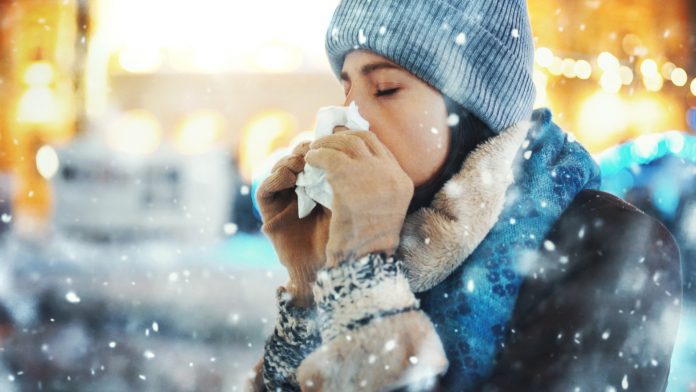
As many of us are spending more time with family and friends, Cameron Medeiros of Nova Biologicals outlines vital infection control measures that can mitigate infection transmission this winter.
With winter here and family and friends looking to spend time together after another long year, people everywhere will soon be staying inside and enjoying the holidays. Over the past several months, infection control efforts to combat disease and illness have dictated the lives of many, and there is a large number of people who are ready for things to just return to how they were before the COVID-19 pandemic. However, even with the advances that have been made in understanding the coronavirus, health organisations everywhere are still struggling with the effects of the COVID-19. This is due to many different reasons, from problems caring for so many infected at once to new strains of the virus that have been appearing worldwide, and it does not seem as though either will change soon.
Even at the time of writing this article, the Omicron strain of the coronavirus is beginning to spread, and cases are starting to add up. There is no telling how many different strains will arise before a suitable solution is found, and that is not even mentioning the various other illnesses that are known to spread during colder months. So, while the winter months are a good time for family and friends to reconnect over the holidays, there are several factors that need to be considered. In this article, microbiological testing and infection control experts Nova Biologicals explore the key measures to implement to reduce the spread of infection this winter.
Social distancing and masks
First, while the coronavirus is a danger that does not seem to be going away any time soon, other viruses and bacteria can cause a wide array of illnesses such as the flu, stomach flu, and even pneumonia. Though these sicknesses can be dangerous but are usually easily treatable, the current state of hospitals and health organisations may make dealing with them much more difficult. For example, the overcrowding of hospitals caused by a large influx of patients suffering from the coronavirus means that there are not as many resources available for other patients. This could range from having insufficient supplies to be able to appropriately treat everyone to not having enough room for new patients.
In some cases, this could lead to someone being unable to receive medical attention even if they desperately need it. This is especially a concern for parents of young children or the elderly, who often have weaker immune systems than most. Further, cold weather means there is a much higher chance of roads freezing over and accidents unrelated to diseases can easily occur. Car accidents, slipping on ice, or staying outside too long in the cold can easily result in a trip to hospital, further straining available resources. To help prevent this, caution should be demonstrated, when possible, to lower the risk of health-related issues. While few are likely to avoid holiday gatherings after living under quarantine for so long, infection control measures like social distancing and wearing masks can help lower the chance of spreading infections of any kind over the holidays. The coronavirus, while still dangerous, is far from the only disease that can easily spread through a crowd of people.
microbiological contaminants
Second, microbiological contaminants, such as the coronavirus, influenza, or even the common cold can easily be transmitted by food or shared surfaces. These surfaces can be anything, from tables and chairs to doorknobs and silverware, and in some cases, it could be difficult to avoid interacting with objects that have been touched by someone who may have been carrying these contaminants. If, for instance, a holiday is spent with close friends and family at someone’s home, it would most likely be challenging to avoid touching the front door of that home.
While infection control practices such as wearing a mask and social distancing may help with avoiding catching a virus or bacteria directly from someone else, these surface contaminants can often linger for extended periods of time until someone else unknowingly picks them up and spreads them further. For this reason, having disinfectant available for use for guests and ensuring surfaces are cleaned and sanitised often can be of great help in reducing the odds of transmitting viruses and bacteria. Sterile gloves, though most likely not needed, could also help reduce the odds of surface transmission among guests. It should also be noted that it may be best for anyone who has symptoms of illness to avoid social gatherings even if they do observe all of the tips mentioned above.
Identifying symptoms
Third, learning to recognise what can be a symptom of infection for the various diseases that are common during the winter season may help in preventing the spread of infection to others. Because some of the symptoms can also be related to cold weather, it may be difficult at first to recognise them as signs of illness. A runny nose, while not unusual in cold weather, can often be an indicator of infection from the common cold. A cough, though easily dismissed as a side effect of seasonal allergies, can also be a result of a lung related infection, such as from the coronavirus or influenza. Monitoring signs like these can help greatly in understanding how best to treat these illnesses, as well as how much of a risk they pose to your health.

In the worst-case scenarios, relatively harmless illnesses such as a cold can lead to much worse problems. One such example, and one that is particularly dangerous for people with weakened immune systems, is pneumonia. Pneumonia, even in a minor case, can cause serious health problems or even death if not treated properly, and can be even worse if a virus like influenza or the coronavirus also infects someone. When considering the combined problem of being very sick and hospitals lacking the space and resources to deal with many new patients at once, this circumstance could very easily turn dire. To avoid this, learning to recognise what the signs are for common illnesses and trying to minimise contact with others if there are recurring signs that someone may be carrying a virus or disease can be extremely beneficial.
Ultimately, there will be many people who attend large social gatherings during the next few months who are either unaware of or apathetic towards the risks these events can cause and there is little that can stop them. The best thing that anyone can do is simply monitor themselves and their environment and make decisions based on that. Keeping an eye on personal health and the health of those around them is something that comes down to individual responsibility. The pandemic has been long and challenging for many, but it does not seem like there will be an end to the threat of infections and disease for the foreseeable future. As the holidays arrive and families and friends get together to celebrate, there will still be a risk of infection. However, with foresight, caution, and an understanding of the potential symptoms, these dangers can be minimised and, with luck, avoided altogether.
This article is from issue 20 of Health Europa Quarterly. Click here to get your free subscription today.

























